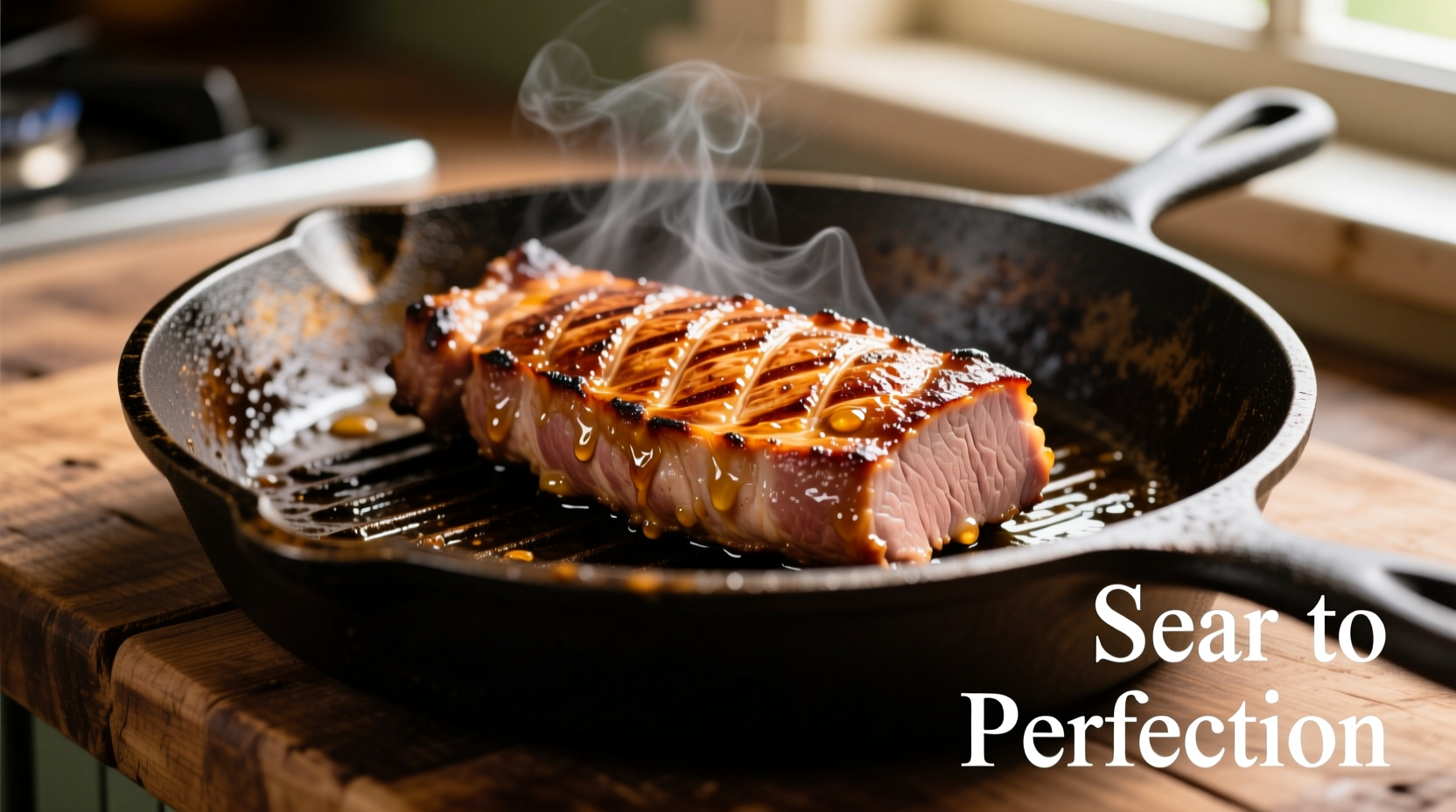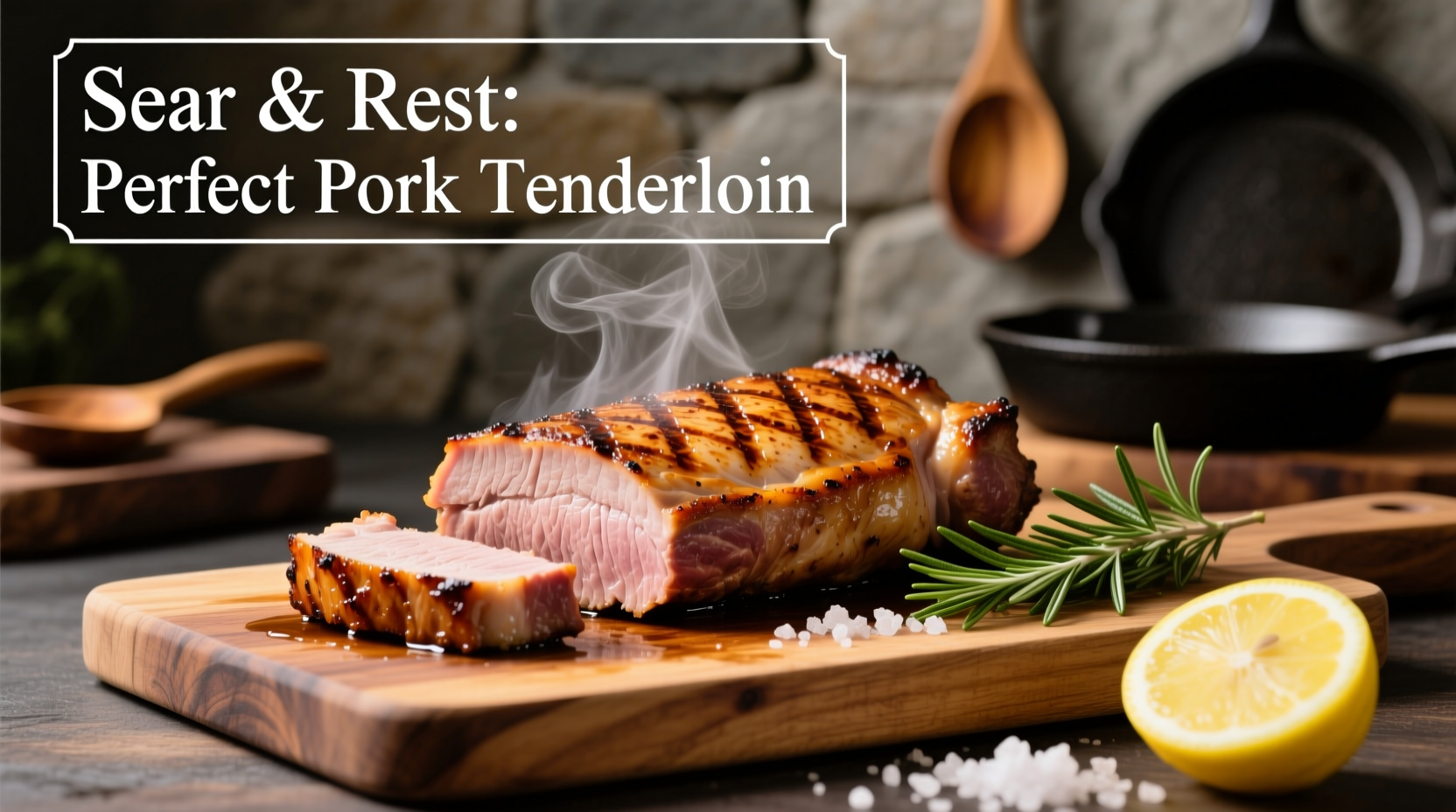Your Foolproof Guide to Perfect Pork Tenderloin
Nothing beats a flawlessly cooked pork tenderloin: lean yet succulent, elegant enough for guests but simple enough for weeknights. As a chef who's taught thousands to master foundational techniques, I'll show you how to transform this humble cut into a showstopper in under 30 minutes. Forget dry, stringy results—this method delivers restaurant-quality pork with a caramelized crust and rosy-pink interior.
Why This Method Works Every Time
Pork tenderloin's leanness makes it prone to drying out, but understanding its muscle structure changes everything. Unlike tougher cuts, it contains minimal connective tissue, meaning precise temperature control matters more than long cooking times. The USDA Food Safety and Inspection Service confirms 145°F with 3-minute rest is both safe and optimal for texture (source). Skip the guesswork with these science-backed steps.
| Doneness Level | Internal Temperature | Visual Cue |
|---|---|---|
| Medium-Rare (Recommended) | 145°F | Rosy center, slightly firm to touch |
| Medium | 150°F | Pale pink center, firmer texture |
| Well-Done (Not Recommended) | 160°F+ | Gray throughout, dry texture |
Your Cooking Roadmap: From Fridge to Plate
Prep: The 5-Minute Foundation
- Dry thoroughly with paper towels—moisture is the enemy of browning
- Trim silver skin using a sliding knife motion (it won't melt like fat)
- Season generously with kosher salt 45 minutes pre-cooking (draws out moisture for better sear)
- Pat dry again right before cooking
Searing: Build Flavor in 4 Minutes
Heat 1 tbsp avocado oil (smoke point 520°F) in oven-safe skillet until shimmering. Sear all sides over medium-high heat until deep golden brown—this Maillard reaction creates complex flavors you can't get from roasting alone.

Roasting: Precision Timing
Transfer skillet to 400°F preheated oven. Cook until internal temperature reaches 140°F (5-8 minutes depending on thickness). Crucial note: Remove 5°F below target—residual heat will carry it to 145°F during rest. For reference, 1.5lb tenderloin typically needs 6 minutes.
Resting: The Non-Negotiable Step
Transfer pork to cutting board, tent loosely with foil, and rest 5-10 minutes. This allows juices to redistribute—skip it and you'll lose 20% more moisture. While resting, make a quick pan sauce: deglaze skillet with 1/2 cup broth, simmer 3 minutes until slightly thickened.
Serving: Pro Technique
Slice against the grain at 1/2-inch angles using a sharp knife. This shortens muscle fibers for maximum tenderness. Serve with pan sauce and seasonal sides like roasted asparagus or garlic mashed potatoes.
Avoid These 3 Costly Mistakes
- Skipping the rest: Causes juice loss—always wait 5+ minutes
- Overcrowding the pan: Lowers temperature, causing steaming instead of searing
- Guessing doneness: Invest in a $10 instant-read thermometer—your most valuable tool for how long to cook pork tenderloin accurately
Flavor Variations for Every Occasion
Master the base method, then customize:
- Herb-Crusted: Press minced garlic and chopped rosemary onto seared pork before roasting
- Asian Glaze: Brush with 2 tbsp hoisin + 1 tbsp rice vinegar during last 2 minutes
- Spice Rub: Coat with 1 tsp each smoked paprika, cumin, and brown sugar before searing
These variations work because tenderloin's mild flavor absorbs seasonings beautifully—perfect for exploring global cuisines while keeping best temperature for pork tenderloin consistent.
Storage and Reheating Secrets
Store leftovers in airtight container for up to 3 days. To reheat without drying:
- Place slices in oven-safe dish
- Add 2 tbsp broth or apple juice
- Cover with foil, warm at 275°F until internal temp reaches 130°F (8-10 minutes)
This gentle method preserves moisture far better than microwaving—key for maintaining that how to keep pork tenderloin moist quality.











 浙公网安备
33010002000092号
浙公网安备
33010002000092号 浙B2-20120091-4
浙B2-20120091-4